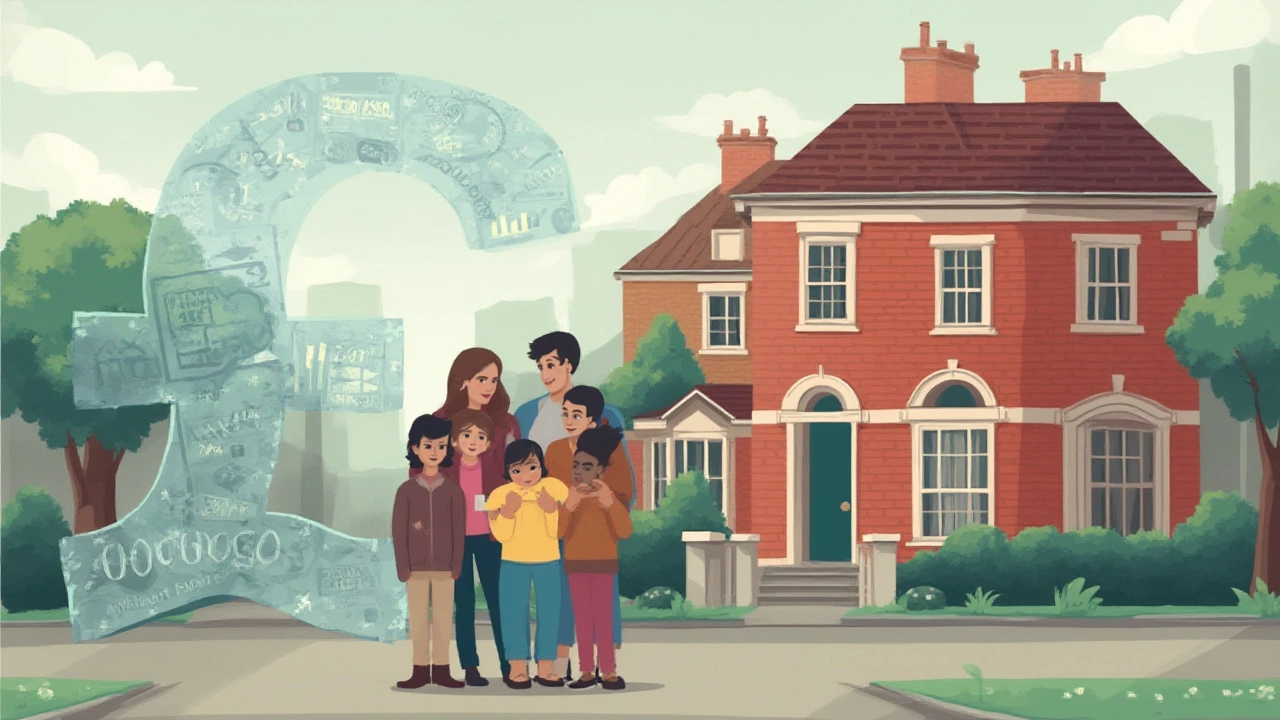Mortgages: What You Need to Know to Get the Best Deal
Thinking about buying a home or switching your loan? A mortgage is the biggest financial commitment most people make, so it pays to understand the basics before you sign anything. In this guide we break down the key pieces – from the cost of a 30‑year loan to the hidden savings you can unlock by remortgaging.
First off, a mortgage is simply a loan you use to buy property. The lender gives you the cash, you repay it with interest over a set period – usually 15, 20 or 30 years. The interest rate is the driver of your monthly payment, and even a tiny change can shift what you pay by hundreds of pounds each month.
How to Spot a Good Mortgage Rate Today
Right now, 30‑year mortgage rates are hovering around 7 percent, but they can swing up or down based on economic news and the Bank of England’s base rate. When you compare deals, look for the annual percentage rate (APR) because it includes fees and other costs that the headline rate might hide.
Use a simple spreadsheet or an online calculator to see how a £100,000 loan at 7 percent works out. Over 30 years you’ll pay roughly £199,000 in total – that’s almost double the original amount. If you can lock in a rate just a point lower, say 6 percent, you’d save about £22,000 over the life of the loan.
Remember, the “best” rate isn’t always the lowest number. Some lenders offer lower rates but charge high arrangement fees. Add those fees to the APR and you’ll see the real cost.
Remortgaging: When Switching Can Boost Your Finances
Remortgaging means moving your existing mortgage to a new deal, often with a different lender. It’s not just for people who want a lower rate – you can also release equity, consolidate debt, or shorten the term to pay off faster.
One of the biggest benefits is saving money on monthly payments. If you’re paying 7 percent and the market drops to 5 percent, swapping deals could cut your payment by a few hundred pounds. Even after accounting for exit fees, the savings usually add up quickly.
Another advantage is borrowing less. Some homeowners use a remortgage to pay down part of the loan, which reduces the total interest you’ll pay. It also strengthens your credit profile because a lower debt‑to‑income ratio looks better to lenders.
Before you start, check your credit score, gather recent payslips, and have a clear idea of how much you owe. Lenders will look at income, existing debts, and the value of your home. Being prepared speeds up the approval and gives you leverage to negotiate better terms.
Keep an eye on the total cost of switching. Exit fees, valuation charges, and legal costs can eat into your savings if the new rate isn’t significantly better. A good rule of thumb is that you should see at least a £1,000 saving in the first year to make the move worthwhile.
Whether you’re a first‑time buyer or a homeowner with an existing loan, the key is to stay informed. Track changes in mortgage rates, compare APRs, and consider if a remortgage could help you meet your financial goals.
Take action now: pull up a mortgage calculator, plug in your numbers, and see how different rates affect your payment. Then, if the numbers look promising, start gathering the paperwork for a remortgage quote. The sooner you act, the more you can lock in lower rates before they climb again.
What Are the Risks of Remortgaging? Key Dangers You Can't Ignore

Remortgaging can save money-but only if you avoid hidden fees, early repayment charges, and extended loan terms. Learn the real risks of switching mortgages in 2025 and how to protect your finances.
Read More >>Can You Get Money Back from Remortgaging? Here’s Exactly How It Works

Remortgaging can give you access to cash tied up in your home’s equity, but it’s not free money. Learn how it works, when it makes sense, and the risks you must consider before pulling out cash.
Read More >>Remortgage Example Explained - Simple Real‑World Scenario

A clear, step‑by‑step remortgage example shows how Australian homeowners can lower rates, release equity, and avoid common pitfalls.
Read More >>Remortgaging to a New Lender: How Easy Is It Really?

Discover how simple it really is to switch your mortgage to a new lender, including steps, costs, timelines, and a handy checklist.
Read More >>Current 2025 Remortgage Rates in Australia: Fixed & Variable Overview

Discover the latest 2025 remortgage rates in Australia, compare fixed and variable offers, and learn how to choose the best deal for your home loan.
Read More >>What Are the Real Costs of a $100,000 30-Year Mortgage at 7 Percent Interest?

Wondering what a $100,000 mortgage over 30 years at 7% really adds up to? Get the numbers, breakdowns, payment tips, and smart money hacks right here.
Read More >>Remortgaging Benefits Explained: Unlock Savings & Lower Rates

Discover why remortgaging could save you big. Learn about lower rates, flexible deals, reducing monthly payments, and boosting your finances.
Read More >>30 Year Mortgage Rates Right Now: What Buyers Need to Know

Wondering about 30 year mortgage rates right now? This article explains the current rates, why they're changing, and what that means for buyers and homeowners. You'll get helpful tips for finding the best rate, learn what actually affects rates day to day, and see how even a small difference can impact your monthly payment. If you're planning to buy or refinance, this guide breaks down what you need to watch out for.
Read More >>What to Expect During the Remortgaging Process

Remortgaging involves seeking a new mortgage deal that may better suit your financial needs. The process includes several checks on your financial status, such as your income, debts, and credit history. Understanding what lenders look for can ease the process and improve your chances of approval. By being informed ahead of time, you can prepare the necessary documents and possibly secure a more favorable loan. This guide provides valuable insights and tips on successfully navigating the remortgaging landscape.
Read More >>Can You Gain Financially from Remortgaging?

Remortgaging can be a strategic financial decision that helps to optimize your mortgage terms and potentially save money. It involves paying off your existing mortgage with a new one, often on better terms, from a different lender. Homeowners might remortgage to take advantage of lower interest rates, release equity, or consolidate debts. While the process might present initial costs, careful planning can lead to long-term financial benefits.
Read More >>Is It Possible to Borrow Less During a Remortgage?

This article delves into the possibilities and strategies of borrowing less when remortgaging. It explores how homeowners can evaluate their current financial circumstances and make informed decisions based on available options. The discussion includes practical tips for assessing needs and planning for future financial goals. Various scenarios and benefits of reducing your loan amount during a remortgage are also discussed.
Read More >>